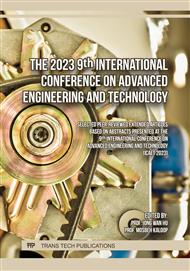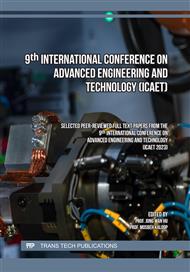p.3
p.11
p.19
p.27
p.33
p.45
p.53
Simulations on Heat Exchangers in Thermoelectric Generators for Automotive Application
Abstract:
Many engineering applications include the heat exchange process between two fluids with distinct temperature gradients separated by solid walls. The machinery used in this operation is known as a heat exchanger. The interaction between exhaust gas and water was modeled in this study using a variety of heat exchanger types. The boundary conditions parameters of the input exhaust gas for the simulation model were established based on the test diesel engine. When the engine is operating at 1200 rpm and 100% load, modeling results show that the heat recovery efficiency of the exhaust gas reaches the maximum value of 65% thanks to the 9-compartment structure and one heat sink in each compartment.
Info:
Periodical:
Pages:
27-32
Citation:
Online since:
February 2024
Price:
Сopyright:
© 2024 Trans Tech Publications Ltd. All Rights Reserved
Share:
Citation:



